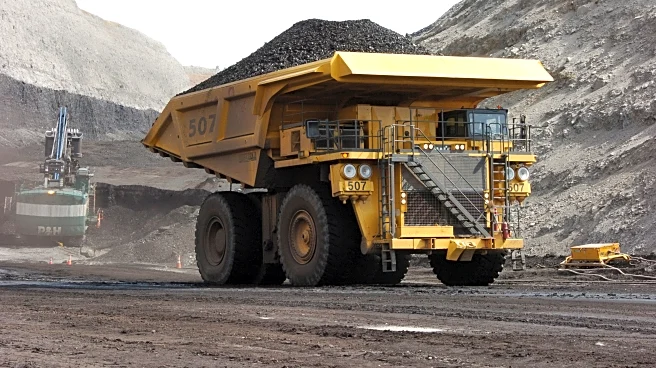What's Happening?
The Trump administration is moving forward with plans to rescind the 2001 Roadless Rule, which currently protects nearly 60 million acres of national forest lands from road construction. The U.S. Department of Agriculture is expected to initiate the formal process to undo this rule, arguing that it will aid firefighters in managing wildfires. U.S. Forest Service Chief Tom Schultz stated that the Roadless Rule has hindered land managers and limited wildfire suppression efforts. However, forest ecologists and fire scientists caution that increased road construction could lead to more wildfires. Alexandra Syphard, a senior research scientist, noted that roads are often sites of fire ignitions due to human activity. A study by the Forest Service's Rocky Mountain Research Station found that non-native plants are more prevalent near roads, challenging the notion that roads improve forest health. The Roadless Rule has been contentious since its inception, with President Trump previously removing protections for Alaska's Tongass National Forest, which were later reinstated by the Biden administration.
Why It's Important?
The decision to rescind the Roadless Rule has significant implications for environmental policy and forest management in the U.S. Critics argue that the move is primarily aimed at boosting timber production rather than addressing wildfire risks. This could lead to increased logging activities, impacting biodiversity and forest ecosystems. The potential increase in road construction may also exacerbate wildfire risks, as roads are known to be ignition points for fires. The debate highlights the ongoing conflict between economic interests and environmental conservation, with potential consequences for climate change mitigation efforts. Stakeholders such as environmental organizations and state governments may challenge the decision, leading to further legal and political battles.
What's Next?
The formal process to rescind the Roadless Rule will likely involve public comments and potential legal challenges from environmental groups and states opposed to the change. The USDA's decision could face scrutiny from lawmakers and advocacy groups concerned about the environmental impact and the precedent it sets for forest management policies. The administration's focus on increasing timber production may lead to further executive actions aimed at deregulating forest land use. The outcome of this policy shift could influence future administrations' approaches to balancing economic development with environmental protection.
Beyond the Headlines
The broader implications of rescinding the Roadless Rule extend to ethical and cultural dimensions, as it raises questions about the stewardship of public lands and the prioritization of economic gains over ecological preservation. The decision may also affect indigenous communities and local populations who rely on forest resources for their livelihoods and cultural practices. Long-term shifts in forest management policies could alter the landscape of conservation efforts in the U.S., potentially impacting global perceptions of American environmental leadership.












